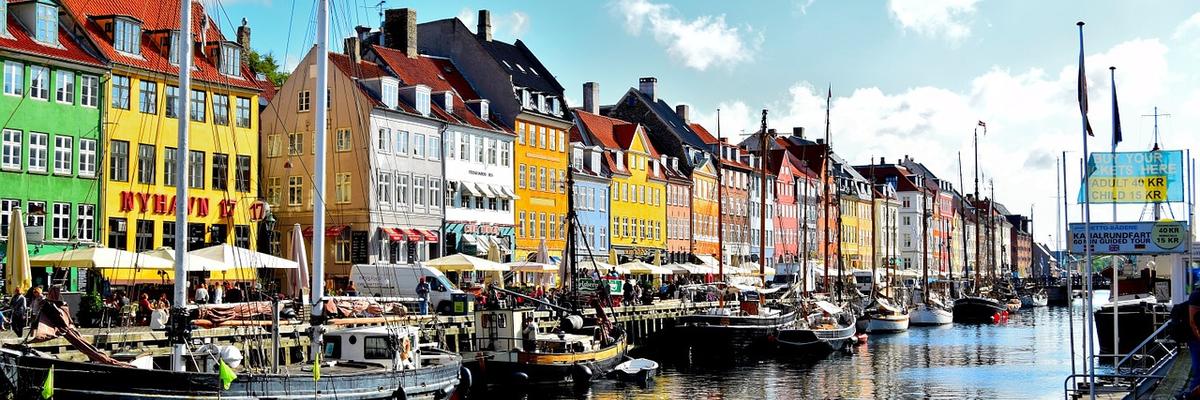Commentary
Katherine Maxwell
21 October 2020
Implementing climate action at city level increasingly necessitates collaboration between a plethora of stakeholders often found in place-based climate networks: public sector; private sector and third sector organisations. Collaboration between stakeholders in such networks enables knowledge exchange and learning, partnership development and can encourage stakeholder buy-in for designing and implementing climate action.
This approach can enhance municipal efforts by enabling the development of more fruitful relationships with stakeholders from across the city, as well as leveraging their support for the city’s climate policies and targets. However, although the collaborative nature of such networks is appealing to stakeholders, there are various motives for joining.
This commentary, which is a small excerpt from my PhD research, explores the key motivations behind stakeholders’ participation in place-based climate networks, providing insight from European cities in order to help understand why an individual or organisation would participate in such networks, and how this may influence their contribution.
Insights from European cities
With increasing demand to deliver effective climate policies and outcomes, European cities have experienced significant resource and budget cuts which has hindered progress. To address this, many municipalities have created climate networks to draw on resources from a range of local stakeholders to support climate action that aligns with European policy guidance. (For example, in the UK, municipalities have developed a variety of approaches as explored in Alice Creasy’s article here.)
My research looked at alternative approaches adopted by Glasgow (Sustainable Glasgow) and Copenhagen (Copenhagen Climate Panel), where each city has developed its own network with multiple stakeholders actively participating in implementing climate action (e.g., through various activities, projects, programmes and policies). Within each city, such networks are deliberate attempts by the municipality to engage local stakeholders on key sustainability challenges.
Key motivations for stakeholders’ participation in place-based networks?
As place-based climate networks are becoming an increasingly common approach for cities to engage with stakeholders on climate action, there are a variety of motivations to consider, as evidenced through Glasgow and Copenhagen. It is important to note that the following list of motivations are not strictly inherent in either network in Glasgow or Copenhagen - in many cases there are cross overs - but these were the key themes that emerge from each city.
Glasgow
-
Partnership development and knowledge exchange
The collaborative nature of climate networks can be a motivating factor for stakeholders to participate, as they intend to develop partnerships with other local stakeholders. In Glasgow, many stakeholders felt that it was part of their remit to engage with other network actors and identify areas of collaboration (e.g., projects), whereas other stakeholders aimed to strengthen their relationship with Glasgow City Council to help them deliver on their sustainable development ambition by sharing sectoral expertise. As such, many stakeholders perceived the climate network as an opportunity to share knowledge and engage in productive discussions with the municipality and other actors.
-
Share organisational perspectives and priorities
Climate networks can provide stakeholders with a ‘safe space’ to showcase their own organisational priorities to potentially influence the networks processes and outcomes. For example, many private sector stakeholders can promote their own organisational priorities (e.g., involvement in new projects), whereas third sector stakeholders can offer a critical eye on city policy by independently reviewing and critiquing climate policy development and implementation. In many cases, stakeholders are motivated by the fact that network participation will benefit their own organisation in some shape or form, such as enable them to identify new funding streams, participate in funded projects, access political intelligence or emphasise a commercial agenda (e.g., test out new products or services).
Copenhagen
-
Access to decision-makers
There are various stakeholder motivations in climate networks, such as access to key decision-makers (e.g., the Technical and Environmental Mayor in Copenhagen), as some stakeholders seek to lobby or influence public sector organsations. The ability to influence city stakeholders in this way can ensure stakeholders that their perspective(s) are not neglected within the policy discussions. This can potentially result in more inclusive and equitable climate policies as the approach encourages more participation in the decision-making process (climate networks don’t tend to have formal regulatory powers, but can act as sounding board for the municipality to discuss potential policies and projects).
-
Altruistic reasons
Given that conformity to network rules and procedures is purely voluntary, there were elements of stakeholders’ altruism within Copenhagen’s network, as they sought to donate time and resources in order to play a part in the transition to a sustainable city and enhanced global profile. Many stakeholders perceived involvement in the network as a ‘civic duty’ and an opportunity for them to build their networks and expand their profile within the sector as well as develop scalable solutions that contribute directly towards reducing greenhouse gas (GHG) emissions.
What can we learn?
Exploring key motivations behind stakeholders participating in place-based climate networks can help us understand why an actor would participate in such networks, and how this may influence their contribution. Both networks in Glasgow (Sustainable Glasgow) and Copenhagen (Copenhagen Climate Panel), highlight a split between stakeholders aligning with their own organisation’s strategy and personal altruism, demonstrating a genuine passion to collaborate and work towards ambitious climate targets that has to be supported by the stakeholders’ own organisation.
As PCAN aims to produce a replicable model for other cities to establish place-based climate networks, it is recommended that climate commissions capitalise on the partnership approach to climate action by:
- Advocating for balanced sectoral representation within networks (no one organisation should dominate the discussions)
- Specifying how network discussions will feed into the policy process (democratic transparency is critical)
- Creating clear network objectives to enable stakeholders to contribute effectively, and,
- Ensuring that the municipality is accessible, flexible and open to new ideas (e.g., networks are an opportunity to engage directly with city actors to develop innovative, credible and robust climate policies).
By learning from stakeholder motivations, PCAN can accelerate the development of agile and effective UK place-based climate networks that can deliver the transformative change required to realise global ambitions.
Katherine Maxwell is a PCAN Associate


